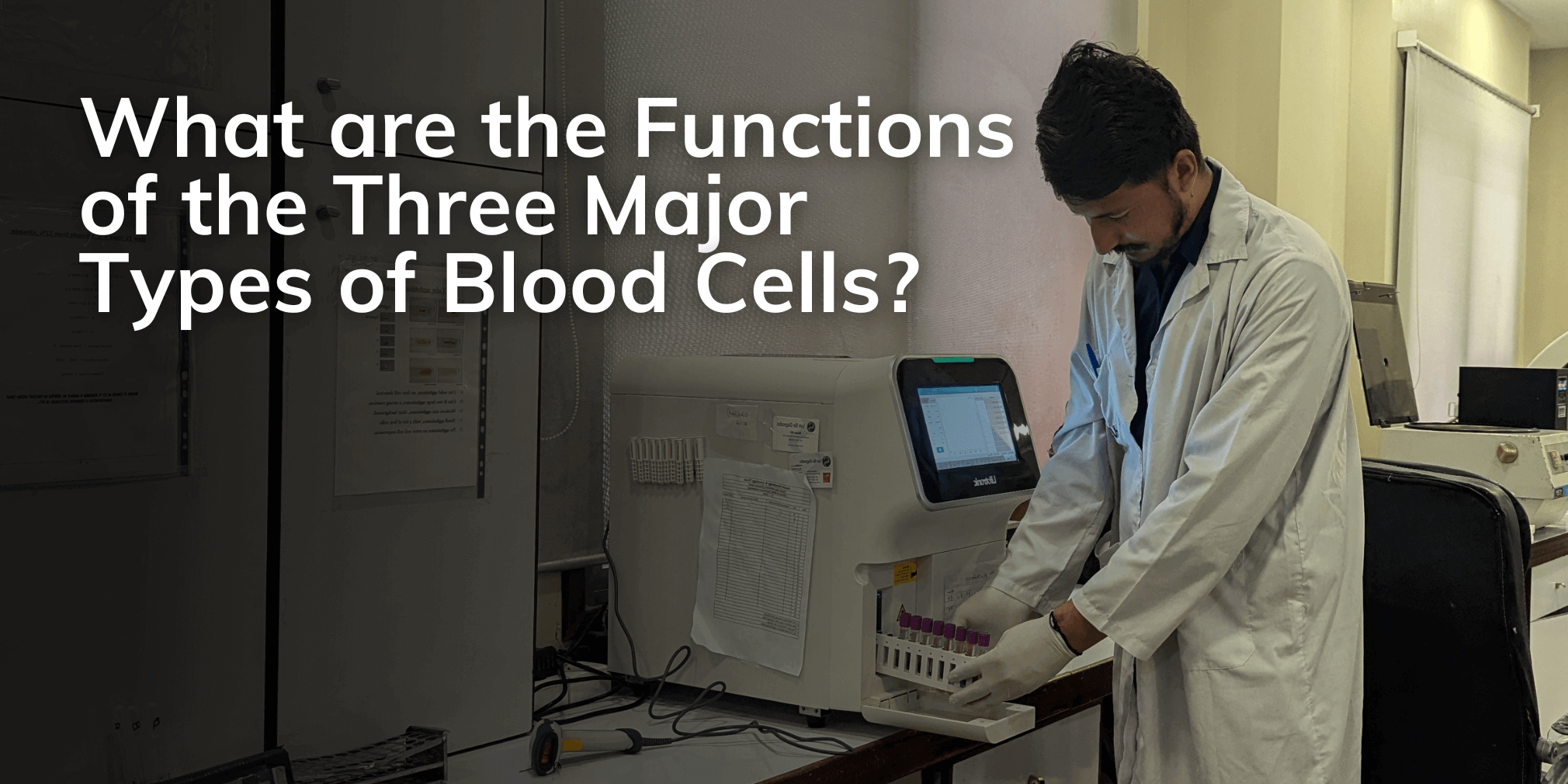
What Are the Functions of the Three Major Types of Blood Cells?
Blood may look uniform, but under a microscope, it’s a dynamic mixture of cells with specialized roles. Each type of blood cell performs a distinct function vital to your survival, i.e., carrying oxygen, fighting infections, controlling bleeding, etc.
In this article, we’ll break down the three types of blood cells, their core functions, how they are produced, and how long they live in the body.
What Are the Main Parts of Blood?
Before diving into the cells themselves, it’s important to understand what blood consists of. It has two main components:
- Plasma (55%):
The yellowish liquid that carries nutrients, hormones, waste, and proteins. - Formed elements (45%):
The blood cells, i.e., red, white, and platelets.
The Three Types of Blood Cells
Blood has three primary cell types, each with a unique function:
- Red blood cells (erythrocytes)
- White blood cells (leukocytes)
- Platelets (thrombocytes)
Let’s explore each in detail.
Red Blood Cells (RBCs)
What Do Red Blood Cells Do?
Red blood cells are responsible for transporting oxygen from the lungs to tissues and carrying carbon dioxide back to the lungs for exhalation.
They contain a protein called hemoglobin, which binds oxygen. A single drop of blood contains millions of RBCs, and each cell is shaped like a flexible disc to travel through tiny capillaries.
Key Functions:
- Transport oxygen to tissues
- Remove carbon dioxide
- Regulate blood pH by buffering acidic waste products
Structure:
- No nucleus (to maximize space for hemoglobin)
- Flexible, biconcave disc shape
- Rich in iron
Production:
Produced in the bone marrow under the influence of the hormone erythropoietin, which is released by the kidneys in response to low oxygen levels.
Lifespan:
- About 120 days
- Old cells are broken down by the spleen and liver
White Blood Cells (WBCs)
What Are White Blood Cells?
White blood cells are the body’s immune defense system. Unlike red cells, WBCs have a nucleus and come in different subtypes, each with specific immune functions.
Types of WBCs:
There are five main types, grouped into two categories:
A. Granulocytes
- Neutrophils: First responders to bacterial infection
- Eosinophils: Defend against parasites; involved in allergies
- Basophils: Release histamine during allergic reactions
B. Agranulocytes
- Lymphocytes: Include B cells (antibody production) and T cells (cell-mediated immunity)
- Monocytes: Become macrophages that engulf pathogens and dead cells
Key Functions:
- Fight infections (bacteria, viruses, fungi, parasites)
- Produce antibodies
- Destroy cancer cells
- Mediate allergic and inflammatory responses
Lifespan:
- Varies widely:
- Neutrophils: 6–8 hours in blood, 1–2 days in
- Lymphocytes: Weeks to years
- Monocytes: About 1–3 days in the blood before moving to tissues
Production:
WBCs are also made in the bone marrow, except for lymphocytes, which mature in the thymus (T cells) or lymph nodes (B cells).
Platelets (Thrombocytes)
What Are Platelets?
Platelets are fragments of larger cells called megakaryocytes. They are crucial for preventing blood loss by forming clots.
Key Functions:
- Initiate blood clotting when vessels are injured
- Stick to wound sites and form a platelet plug
- Activate proteins that lead to fibrin formation (stable clot)
- Release growth factors to aid tissue repair
Structure:
- Small, disc-shaped
- No nucleus
- Lifespan: 7–10 days
Disorders:
- Low platelets = thrombocytopenia (risk of bleeding)
- High platelets = thrombocytosis (risk of clotting)
Blood Cell Counts and Their Clinical Relevance
Complete Blood Count (CBC)
A CBC test is one of the most common diagnostic tools used in labs. It measures the number and characteristics of:
- RBCs (including hemoglobin and hematocrit)
- WBCs (with or without differential count)
- Platelets
Doctors use CBC to:
- Diagnose anemia, infection, leukemia
- Monitor bone marrow function
- Evaluate overall health before surgery or treatment
Lifespan Summary Table
| Blood Cell Type | Function | Average Lifespan |
|---|---|---|
| Red Blood Cells | Oxygen & CO₂ transport | ~120 days |
| White Blood Cells | Immune defense (varies by type) | Hours to years |
| Platelets | Clotting & tissue repair | ~7–10 days |
Common Disorders of Blood Cells
| Cell Type | Disorder | Description |
|---|---|---|
| RBCs | Anemia | Low red cell count, often due to iron deficiency |
| WBCs | Leukopenia / Leukemia | Low count or abnormal proliferation |
| Platelets | Thrombocytopenia | Risk of bleeding due to low platelet count |
Why This Matters for Patients and Donors
Understanding the types of blood cells and their roles is crucial if you’re:
- Donating blood or platelets
- Receiving treatment for infection, anemia, or cancer
- Tracking results from a CBC or hematology test
At Husaini Blood Bank, all donated blood undergoes full screening, separation, and processing to ensure patients get exactly the cell components they need.
Conclusion
Each blood cell type has a specialized function:
- Red blood cells deliver oxygen.
- White blood cells fight infection.
- Platelets stop bleeding.
Together, they form a life-support system that responds in real time to injury, infection, and disease. If you’re looking to monitor your own blood health, donating blood, or simply want a clearer CBC report, knowing what these cells do gives you better insight and control.
Need a Lab Test or Sample Collection?
Visit your nearest Husaini Blood Bank branch or book a home sample collection for:
- CBC & hematology testing
- Platelet counts (esp. for dengue or surgery prep)
- Blood typing for donation or surgery
